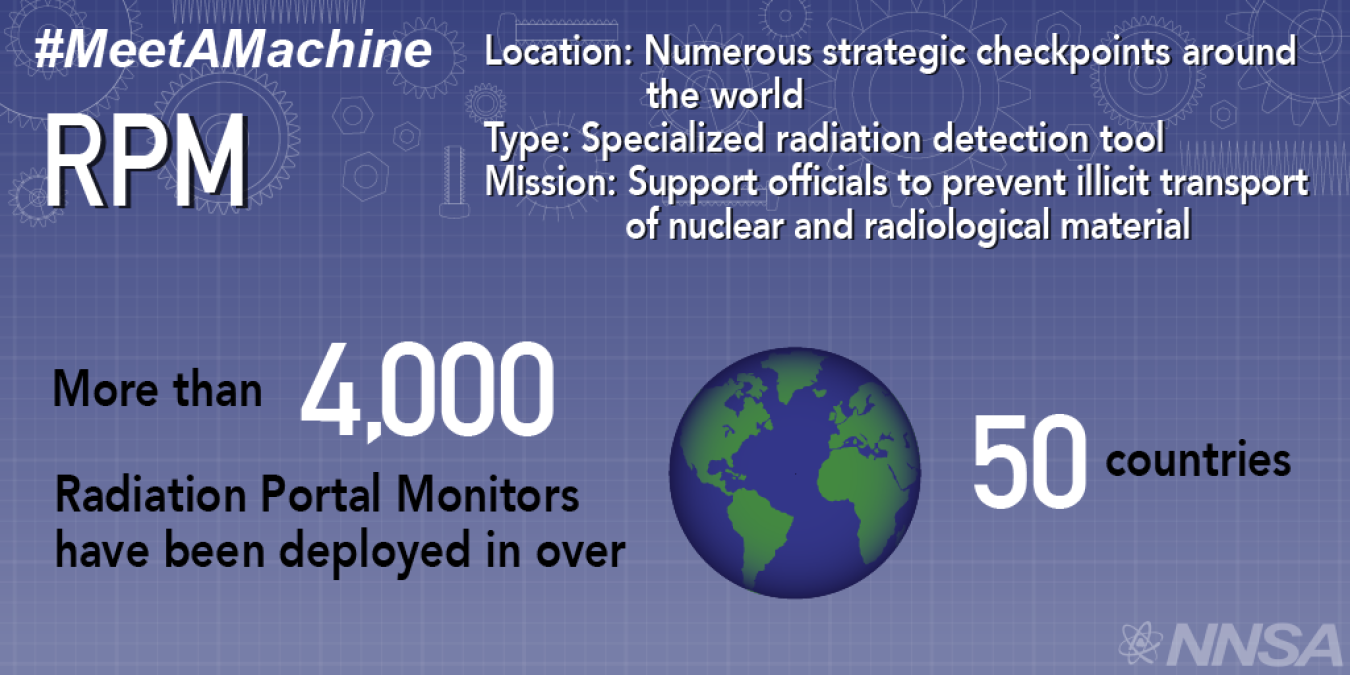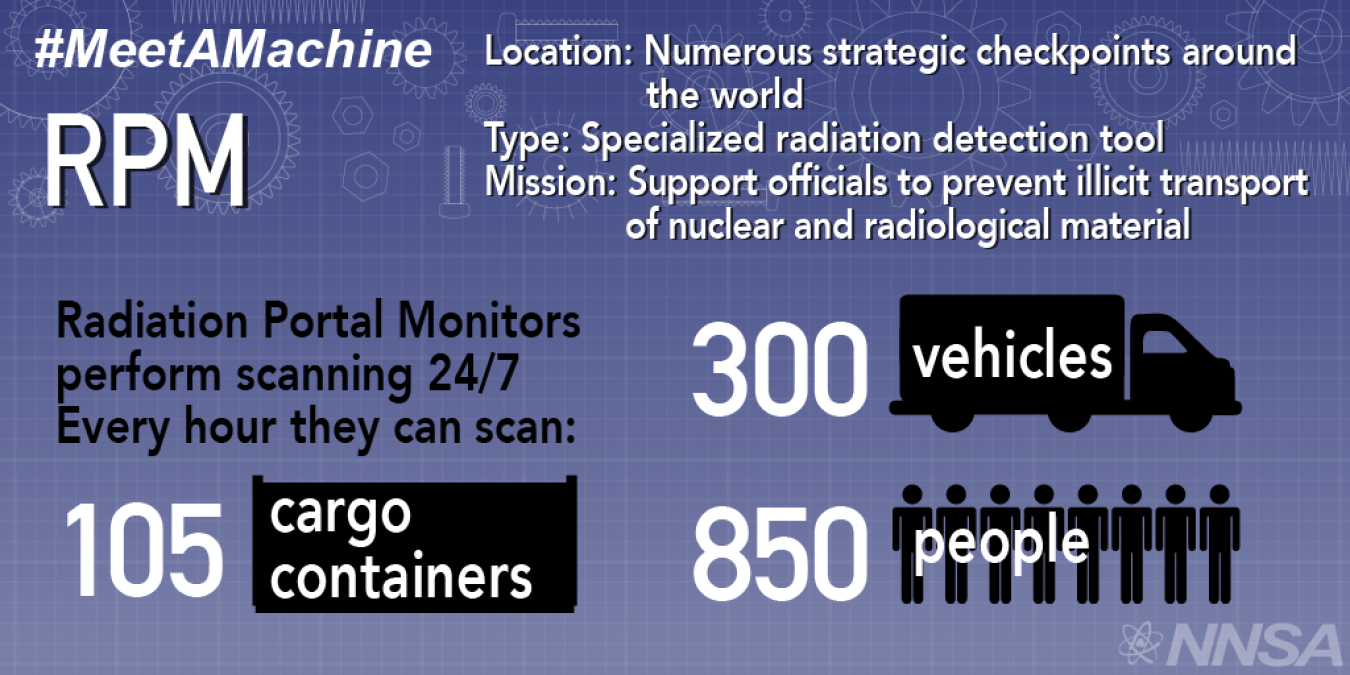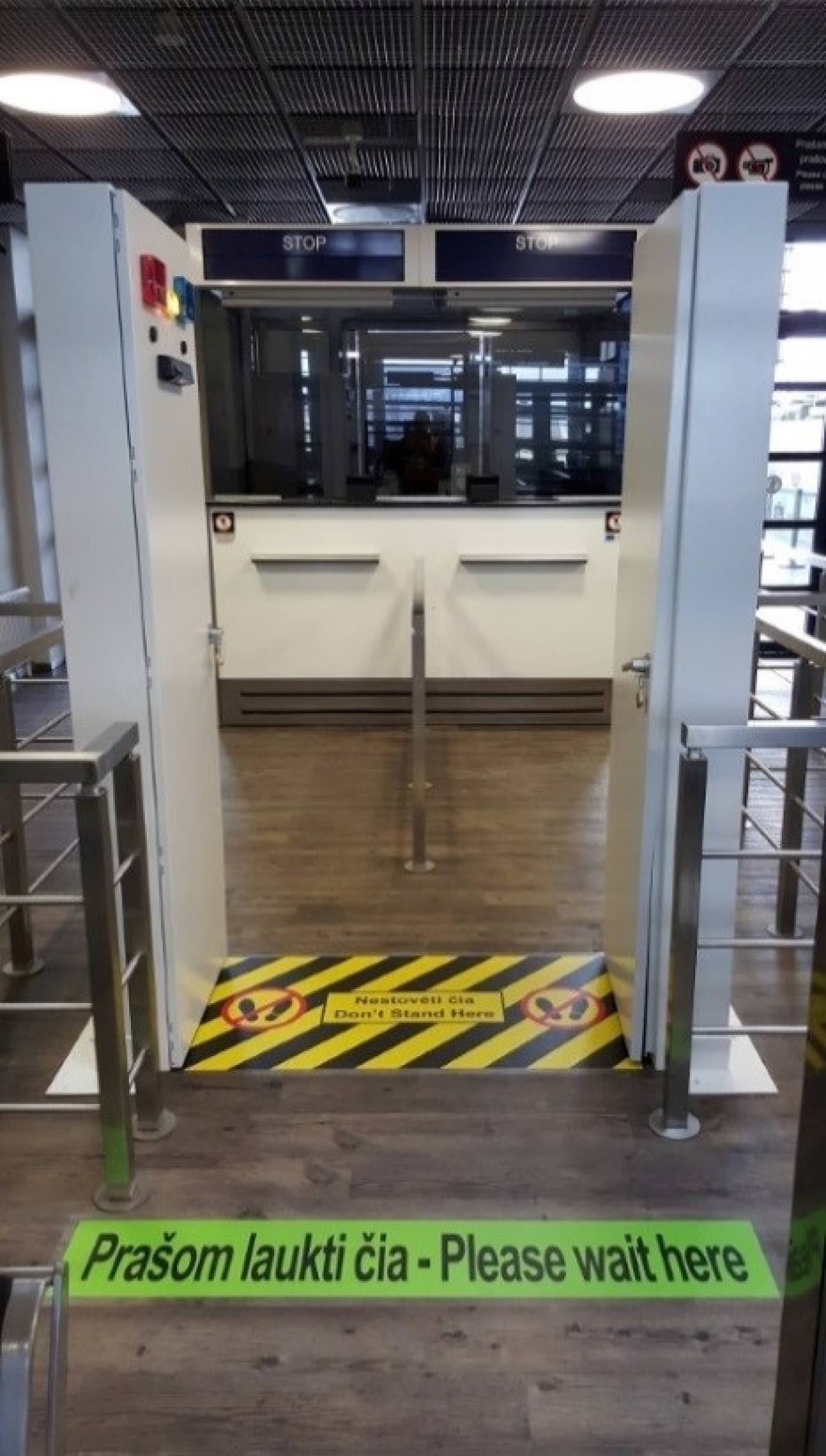Ensuring that nuclear materials are not being illicitly moved is part of NNSA’s core mission to reduce nuclear and radiological threat...
National Nuclear Security Administration
October 5, 2016Ensuring that nuclear materials are not being illicitly moved is part of NNSA’s core mission to reduce nuclear and radiological threats. However, since traditional security tools — such as metal detectors, X-ray scanners, and sniffer dogs — cannot measure radiation, frontline officers need specialized tools to detect special nuclear and radiological materials that could be used by terrorists. One such tool, the Radiation Portal Monitor, scans people and cargo transiting through airports, seaports, and land border crossings. RPMs are critical to NNSA’s nonproliferation and nuclear security mission because they can be installed at key locations and scan 24 hours per day, 7 days a week without affecting normal site operations. In addition to disrupting the illicit trafficking of these dangerous materials, these monitors have detected hundreds of radioactive sources that should not be in the stream of commerce and helped prevent public exposure to abandoned or “orphan” radiological sources and contaminated goods. NNSA’s network of RPMs – more than 4,000 worldwide – is the largest network of radiation detectors in the world, and works to keep checkpoints and borders safe.
Interesting facts:
- Radiation is commonly used in medicine to diagnose and treat ailments. Patients who have recently undergone a treatment using radiation can cause multiple alarms on an RPM from more than 100 feet away.
- Many NNSA partners share scan data. In 2015, NNSA received data on 80 million transits through RPMs – nearly 500 GB of data. (Seven minutes of HDTV video is about 1 GB.)



Ensuring that nuclear materials are not being illicitly moved is part of NNSA’s core mission to reduce nuclear and radiological threats. However, since traditional security tools — such as metal detectors, X-ray scanners, and sniffer dogs — cannot measure radiation, frontline officers need specialized tools to detect special nuclear and radiological materials that could be used by terrorists. One such tool, the Radiation Portal Monitor, scans people and cargo transiting through airports, seaports, and land border crossings. RPMs are critical to NNSA’s nonproliferation and nuclear security mission because they can be installed at key locations and scan 24 hours per day, 7 days a week without affecting normal site operations. In addition to disrupting the illicit trafficking of these dangerous materials, these monitors have detected hundreds of radioactive sources that should not be in the stream of commerce and helped prevent public exposure to abandoned or “orphan” radiological sources and contaminated goods. NNSA’s network of RPMs – more than 4,000 worldwide – is the largest network of radiation detectors in the world, and works to keep checkpoints and borders safe.
Interesting facts:
- Radiation is commonly used in medicine to diagnose and treat ailments. Patients who have recently undergone a treatment using radiation can cause multiple alarms on an RPM from more than 100 feet away.
- Many NNSA partners share scan data. In 2015, NNSA received data on 80 million transits through RPMs – nearly 500 GB of data. (Seven minutes of HDTV video is about 1 GB.)

